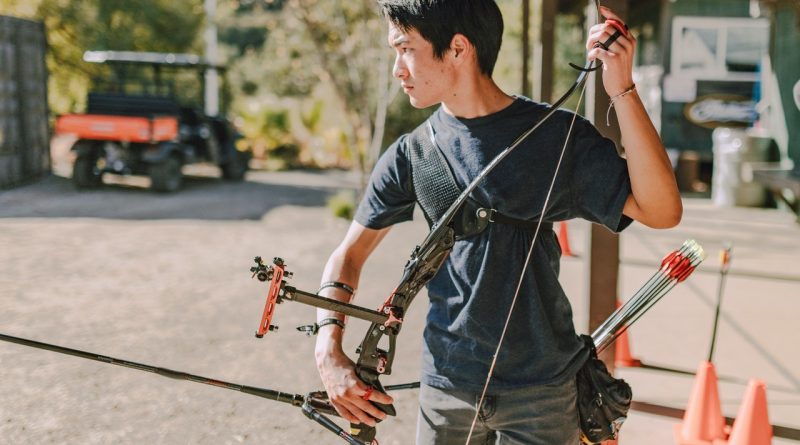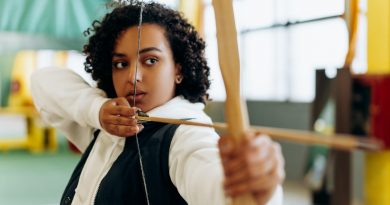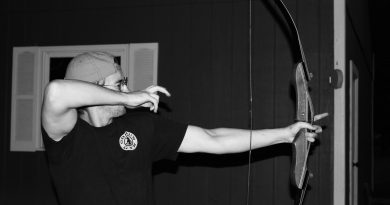How to take care of your bow
As an archer your bow will always remain one your most precious possessions. Learning to look after your bow will make it last much longer. Here are some tips to help you take care of your bow.
Looking after the bow
* Never lay your bow on the floor or ground. Dust and other material can damage the bow. If you leave your bow lying around people may slip on it and ruin it beyond repair.
* Ensure that your bow does not get wet. If it does fall into water or you are caught in the rain, try and dry your bow as soon as possible. Despite a waterproof finish, water can damage the alignment of a bow particularly if it has metal content.
* Use a good wax or bow polish to maintain the finish of the bow.
Looking after the bow string
The string of the bow gets damaged very easily. Always use a special bow string wax to keep the string taut and waterproof. Do not let others handle your bow carelessly as your best performance depends on the condition of the string more than the body of the bow. Regular polishing of the string will also prevent it from getting entangled.
Looking after the arrows
Arrows are available in different qualities and price ranges. You can buy cheap wood arrows and throw them after only a few days’ of use. You do not need to worry about these arrows getting lost either. However, you may like to buy costly arrows particularly if you want to prepare for a tournament.
Do not allow the arrows to get wet. The slightest of damage to the arrow can affect your performance in a major way.
Target mats and faces
Mats catch fungus easily if left in the rain or allowed to get wet. Clean your mats regularly along with all your other archery items. Target faces tear easily particularly after a few weeks’ use. You can use tape to repair small tears though. Always be careful about the alignment of the target mats and faces to ensure accurate results. You can increase the life of the target faces by using patches.
Checking the nock
The nock wears out easily and should be checked regularly. If you intend replacing a nock, choose one to match the rest of the arrows. You can remove a nock by using a lighter to melt the glue holding it in place. When working on the arrows always keep the arrows pointed upwards and avoid the flame touching any other section of the arrow. Once the glue has melted you can use pliers and sandpaper to take off the old nock. Clean the area and use your finger to spread out fresh glue before putting a new nock in place. Check the alignment several times before the glue hardens. You can check the alignment of the nock by rotating the arrow.
How to replace a feather
Correct alignment is the key to replacing an arrow feather properly. Always use a glue of good quality. Also take care not to put in a left-wing fletching for a right-wing fletched arrow. Use a blunt knife to remove the worn out feather without ruining the shaft of the arrow. Place the new feather properly on the jig and check the alignment with other feathers before gluing in place. Use a clamp to keep the feather in place till the glue dries.
Should you replace arrow points?
If an arrow body is in good shape but the point has been damaged you surely need to replace the arrowhead. Also, if an arrow point is in good condition there is no point in throwing it away. You can remove the arrowhead and use it with another arrow. An arrowhead cannot if replaced if the shaft has been damaged.
Importance of arrow rest
Like every other part of your bow, the arrow rest must be checked regularly so that the arrow pressure point must be exactly on the pivot. The arrow must be exactly perpendicular to the string when placed on the arrow rest.
How to place a sight on the bow
Placing a sight on the bow requires some technical knowledge though it looks like an easy task. The sight has to be mounted exactly straight to ensure that the path of the arrow is correct when you shoot. According to your convenience you need to decide whether you want to place the sight on the back or front of the bow. If you place it in the front you can move the sight block lower and get your arrows to cover an extra distance of seven meters. However, if you are looking for greater accuracy at a short distance then you must place the sight at the back of the bow. The sight pin should always be higher than the arrow when the sight block is at its lowest on the bow.




